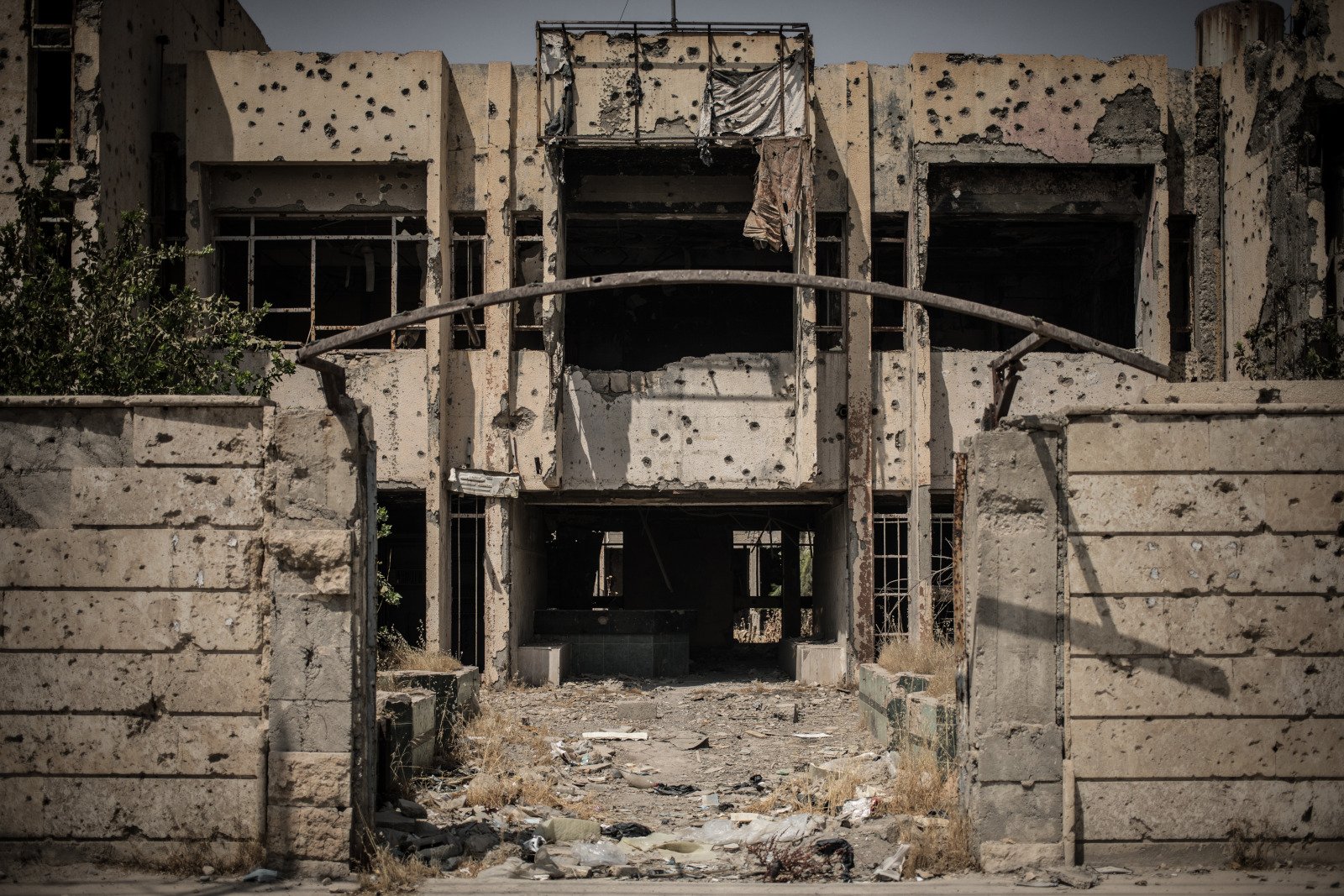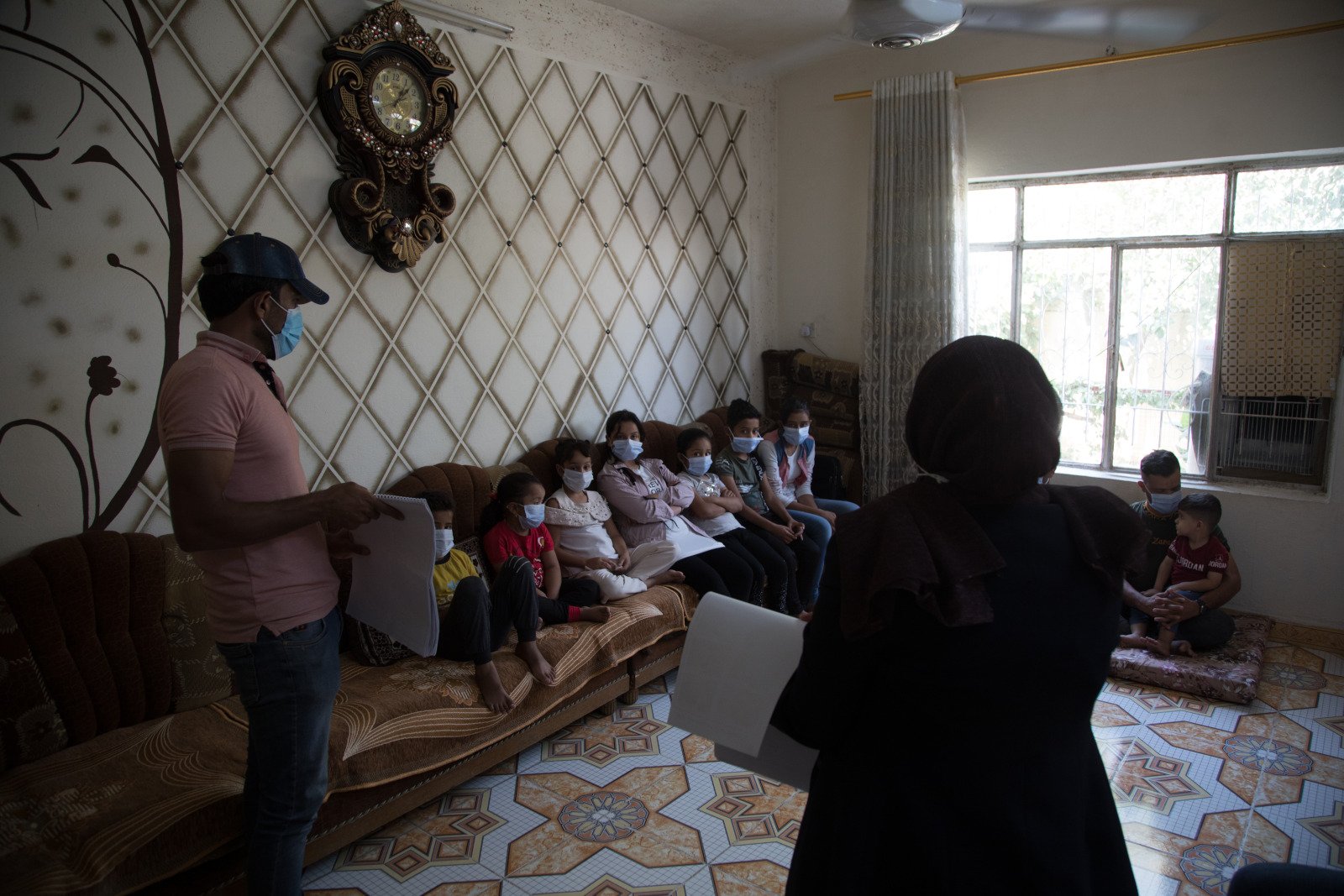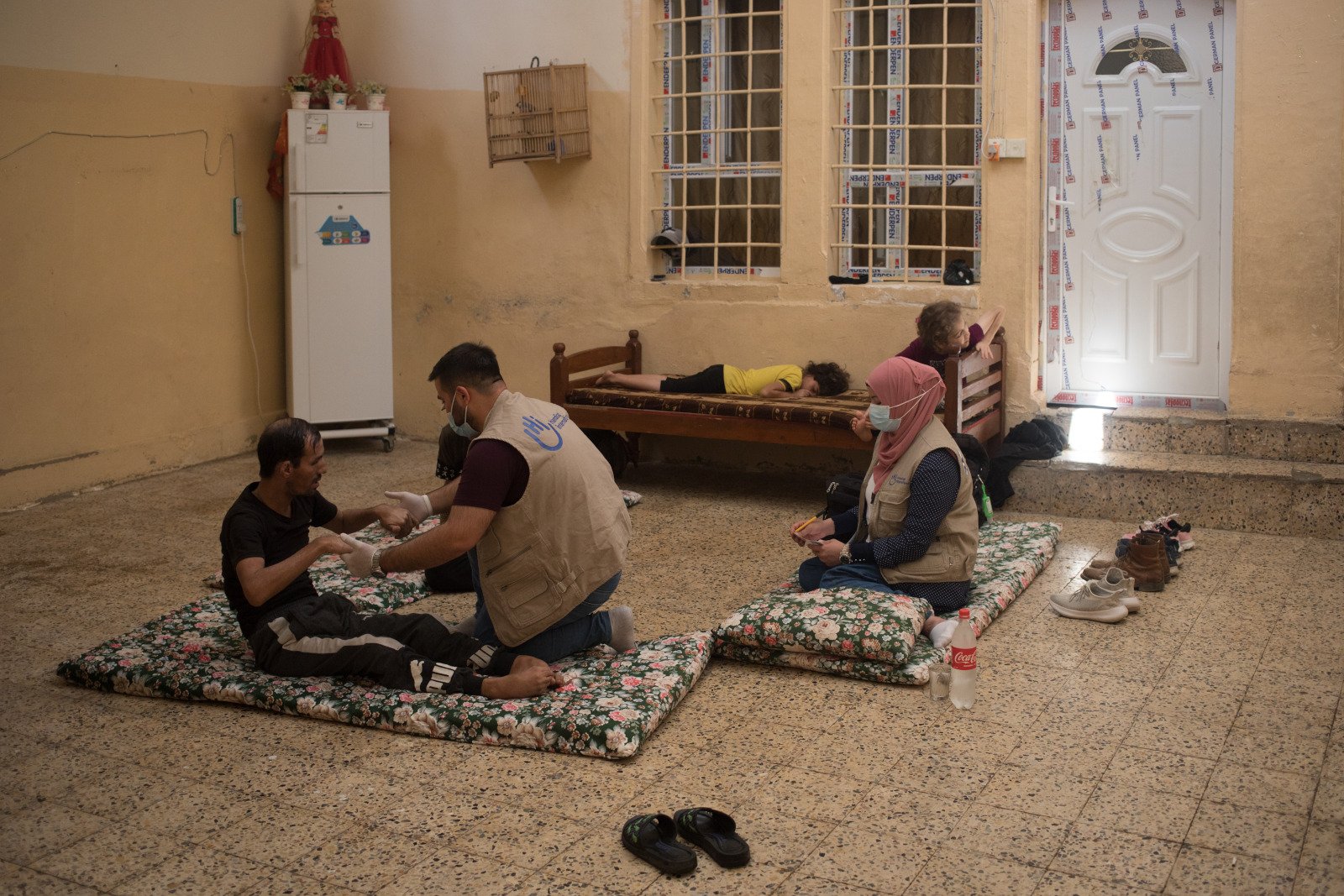New Report – “No safe recovery”: Iraq bomb contamination area is twice the size of Greater London
Press Release | 13th October 2021, 9:00
Press Release | 13th October 2021, 9:00
Five years after hostilities ended in Iraq, communities are still struggling to live in one of the most heavily Explosive Ordnance (EO) contaminated countries in the world. Published on 13th October, Humanity & Inclusion’s report “No safe recovery: The impact of Explosive Ordnance contamination on affected populations in Iraq” paints a harrowing picture of the daily lives of Iraqis, some of whom are too nervous to let their children walk to school, or so desperate for income that they’ll risk working in places known to be polluted with explosives.
Researchers focused on Iraq’s heavily populated governorate of Ninewa, home to the cities of Mosul, Sinjar, and Tel Afar. The report lends critical evidence to generations of historical examples proving that war cannot end for civilians until the last bomb is cleared. It underscores the need for States to reach a consensus on a way to protect civilians when conflicts strike populated areas.
Iraq is one of the most heavily contaminated countries by explosive ordnance on earth. Explosive remnants of war affect more than 3,200 km2 of land - twice the area of London. The pollution infuses the population with terror, as mines or explosive remnants claimed about 700 victims between 2018-2020. A staggering 8.5 million Iraqis live amid these deadly waste-products of war.

A destroyed health center in Mosul - © F. Vergnes/HI
Demining bombed-out cities costs six times as much as it does to clear a rural setting. The job is often done with a mix of heavy machinery, and there is a constant risk to deminers and neighbors that controlled explosions could trigger building collapse. In cities, this critical work takes eight times longer to complete compared to rural settings. Funding is a serious barrier. Iraq requires $170-180 million USD per year, including $50 million for Mosul, to remove its explosive ordnance.
“We’re often talking about bombs triggered by tripwires in hallways, aerial bombs that never exploded resting meters below ground and surrounded by rubble, and children’s toys packed with explosives.” says Humanity & Inclusion Advocacy Protection of Civilians Manager Alma Al Osta.

Volunteers working with Humanity & Inclusion raise awareness among young people in their neighborhoods about the risks associated with landmines and explosive remnants of war. - © F. Vergnes/HI
Clearing what deminers call “three-dimensional” pollution - meaning that it can be found anywhere - requires the top-level of explosive ordnance training - a classification that too few deminers hold in Iraq. Even the classic deminer’s blue protective suit is almost useless amid this contamination. One mine actor interviewed for the report in Mosul noted, “We would find more items as we dug. This makes clearance difficult, as it is not just the surface layer, it is deep underneath.”
Bombing populated areas was a hallmark of the conflict that Iraqis endured from 2014-2017. This practice not only robbed tens of thousands of Iraqis of their lives, it also left their schools, fields, pathways, homes, water treatment plants, and shops littered with explosive ordnances.
“Bombs and cities should never meet,” says Alma Al Osta. “Not only does the moment of impact cause maximum destruction to the buildings, infrastructures, and people within the blast radius, the explosive pollution left behind robs a population of its right to any chance at restoring its economic and social heartbeat.”

Humanity & Inclusion physical therapists providing a rehabilitation session to people injured by explosive weapons - © F. Vergnes/HI
Indeed, the report is stacked with data from the conflict, culled from regional reports among others: $7 billion in damages to the electricity sector; $2.8 billion of damage to roads, airports, bridges, and railways. In Mosul alone, 9 out of 13 hospitals were damaged, along with 169 schools damaged or destroyed.
“Current rules of war fail civilians in populated areas during conflict, and as we can see from Iraq, years after the fighting ends, too,” says Alma Al Osta. “What evidence do States need to back a strong political declaration against the use of explosive weapons with wide-area effect in populated areas?” After two years of diplomatic discussions, we expect such a declaration to be signed by States soon. It will mark a historic breakthrough for the protection of civilians in conflict.
Explosive ordnance accidents have also shifted roles within families and communities. “When we see a head of household injured in an accident, they may feel that they are no longer able to support their family, which has a negative impact on their psychological well-being,” says Humanity & Inclusion Country Director of Iraq Marc Van der Mullen. “If a family member experiences disability after an accident, they can be seen as a burden, especially as access to health services remains limited and expensive.”
One in 12 internally displaced persons—Iraq counted 678,512 internally displaced neighbors in 2020 - reports that the presence of explosive ordnances is a barrier to their return, the report notes. Barred from returning safely, households continue to be displaced and communities are unable to reconnect and build their resilience collectively.
In Ninewa, access to education has been severely affected as many schools were destroyed during the conflict and some schools, as well as roads to schools, remain contaminated. As one woman explained in Sinjar, “In my village, there is no high school. It is difficult for students to travel to other villages, especially when we do not know whether that village is contaminated or not.”
The report focuses on Ninewa, Iraq’s second most populated governorate. Researchers undertook a thorough desk review of secondary literature and conducted key informant interviews with relevant stakeholders and individuals from the affected population.
Get the latest news about Humanity & Inclusion's work delivered straight to your inbox.
ABOUT US
Humanity & Inclusion U.S.
8757 Georgia Avenue
Suite 420
Silver Spring, MD 20910
MORE INFORMATION
SEARCH
Humanity & Inclusion is a nonprofit 501(c)(3) organization (EIN/tax ID number: 55-0914744). Contributions are fully tax-deductible to the extent allowable by law. CFC #51472
None of the funds donated through this website will benefit activities in the following countries: Cuba, Iran, North Korea, the Crimea Region, or Syria. Humanity & Inclusion does not have programs in all of these countries.